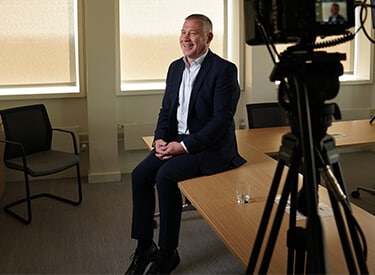Q: What are the main drivers of social value?
Social value is being driven by an understanding and appreciation of the impact that we all have, looking beyond the environment impact to wider society to a mindset where impact and social value are part of a business culture. Driven in part by the need for greater transparency and reporting that organisations need to undertake, in a world where there is greater inquisitiveness. If we look at society as a whole, our future generations are real drivers for change. They're well-versed in social media, and therefore happy to share their views where they see a company not doing the right thing, becoming change agents for business, aligning their own values to companies. Selecting where they want to work based not only on salary, but the values a company holds. Being happy to walk away from brands that don't share their views.
Q: How is social value changing and how will it evolve in the future?
A change of consciousness is leading to a greater understanding about social value, a change supported by legislation in some parts of the world, with public procurement playing an important role here. In this the values that certain societies around the world hold really come to the surface, helped by the context that the role that UNSDGs play.
Q: Why is the relationship between the environment and social value so important?
If we take the built environment as an example, as we think about development projects, we need to be really sensitive to the communities being affected by a development, making sure that they are part of the process, bringing together different social groups ensuring ownership in what is being designed. So, the relationship between the built environment and the natural environment becomes important to break down barriers as we see change particularly in urban areas.
Q: Social value: What is the end state we are trying to achieve?
I think our intended destination is a really important part of this conversation, because understanding the role that organizations of all sizes can play is incredibly important in terms of driving change that is inclusive and positive. The public sector has done some great work, in driving change through the Social Value Act, and in terms of public procurement. Now the private sector is doing the same in terms of thinking about ethics in the supply chain. It’s all about everybody playing a role, from business leaders to consumers. When we spend, even a pound, what does that mean in terms of the goods and services we procure? But also, how can we actually add value? Is that about supporting local communities? Is it about making change happen in a local area? How can we help create jobs or upskill local people? So, it's about an inclusive and supportive agenda in terms of the impact you're having from an environmental and a people perspective. It comes back to ‘people, planet, profit’.
Q: What role do the various sectors and regions have to play in shaping social value?
This is where it gets really interesting because the various sectors that can add social value, are all so very different. If we think about social value from a geographical or regional perspective, we need to have an appreciation of the role that the climate and culture has in terms of allowing communities to come together to add value to the spaces that we create. It will vary enormously in different parts of the world. There are countless examples, from every sector and region, but what they all have in common is the need to think in a very inclusive way - to understand how development or change has an impact on different social groups. So, it's about building on this understanding, and not about changing it.
Q: Social value: What does best practice look like?
If I give an example, about a company and its claim to be net zero. It was examining the environmental impact of its operations, particularly its carbon emissions, and it really wanted to do the right thing. It decided to offset its emissions by creating a local community forest. A good example of thinking differently. It's about being creative, making sure that when you think about social value - about the relationship between the environment and social issues - you are really bringing those together in a way that allows people inside and outside the organization to be positive about what they're doing. So, best practice is down to what you make it. It's about understanding the impact you have, involving your people and, sometimes, just breaking up the rule book and doing things differently to drive change - purpose driven impact.






